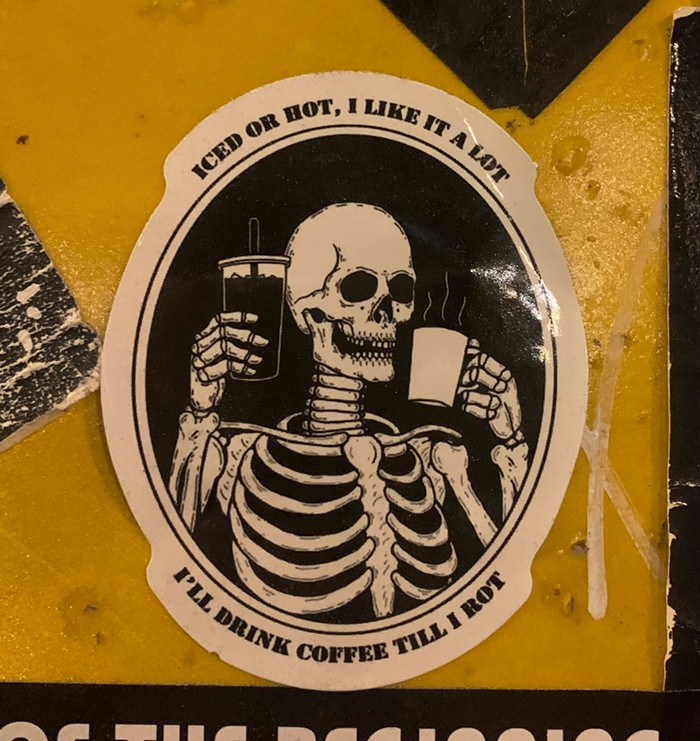
TOOK:
Her first real art class at Michael's craft store.
USED TO:
Paint piles of rotting flesh in the desert.
WONDERS ABOUT:
How things happen in your brain versus your body.
Emily Gherard's paintings and drawings of subtle shapes and textures look like there's some real, alive thing in there. You can't make out what it is for sure, but you know it's there. In one piece, a dark patch gleaming up from a field of static is like an underwater creature detected in sonar view. In another, a series of shapes assemble themselves like rocks that have cascaded down a mountain into a haphazard pile—but each rock is bulgy and soft at the edges. As much as they're rocks, they're fleshy bodies that shift and twist and press against each other. They may as well be strangers on the bus.
It all started when she was a teenager with a figure-drawing obsession. Two decades later, her Ballard garage studio is still filled with figures, but now they're suspended between being images and being objects. If you feel empathy with them, you might not know why. But we all are suspended between being objects and being images, inside bodies but only able to see them from the outside.

If you feel empathy with her paintings, you might not know why.
Take the largest painting she showed last year at Cornish. It's 80 inches tall and doesn't have a title; she doesn't title anything. It has two main parts, one image and one object. Gherard painted on the surface the illusion of a very detailed brick wall, as if you're up against a hard stop. On the lower right of the "wall," there's a dark form that's pitch-black and solid at its center, but so shadowy at the edges that it seems like it could only be a projection. Look closer, and the two blur together and play. Gherard's meticulous working of the paint makes each illusion seem possible, then impossible again, back and forth. To create the effect, she scrubs and sands and buffs her many-layered surfaces for months. She wants no remaining mark of her hand. She's trying to create something that will do its own breathing. That is hard to do when what you're making doesn't look like, or even reference directly, any living thing in the world. It is close to magic.

Gherard's art is hard to talk about. It's easy to say what she doesn't do: art that commands attention, popular art, idea-driven art (hers is material-driven). And it's not conventionally pretty; it's hard to imagine it as anybody's idea of decoration. "Nobody buys my work, and that's fine," she said. That hasn't stopped galleries from showing her work. She was with Francine Seders for six years and recently signed with Blindfold; last year, she was a finalist for the Neddy fellowship. People keep returning to the oddball magnetism of Gherard's art, because it is such queerly, fundamentally good company for humans. ![]()


















